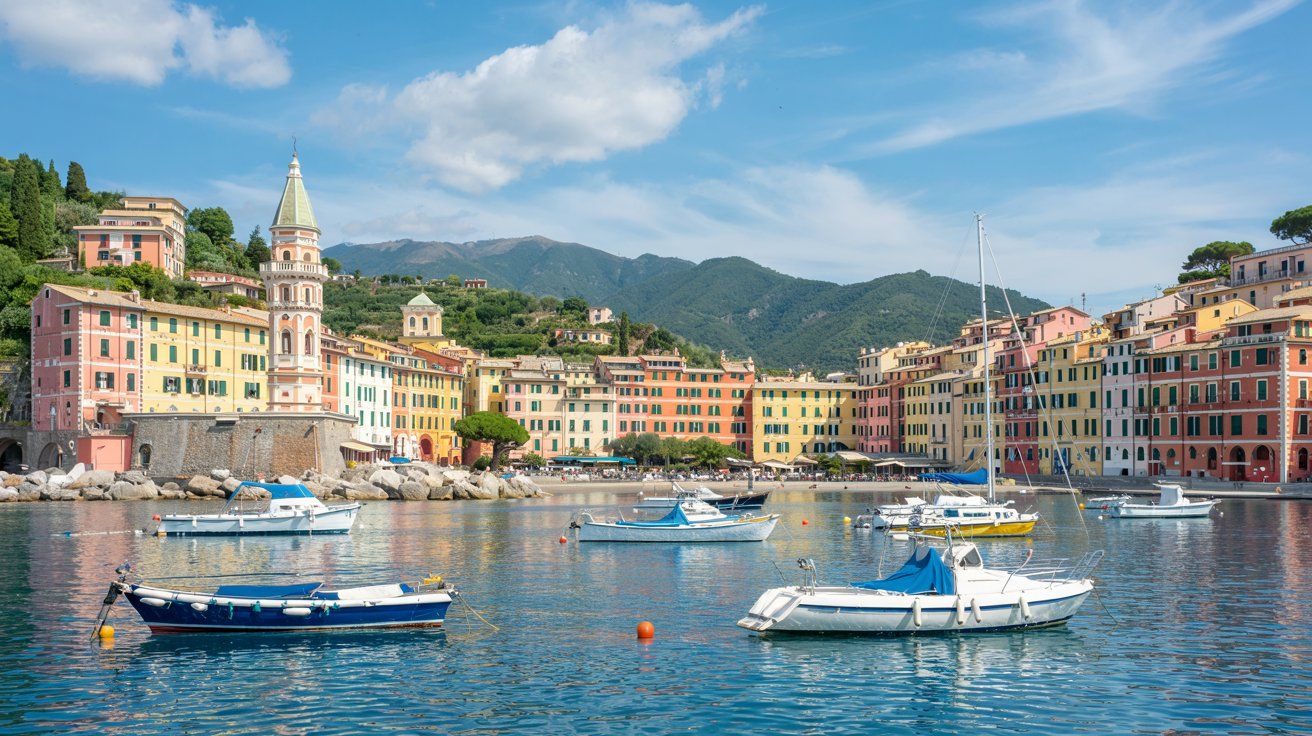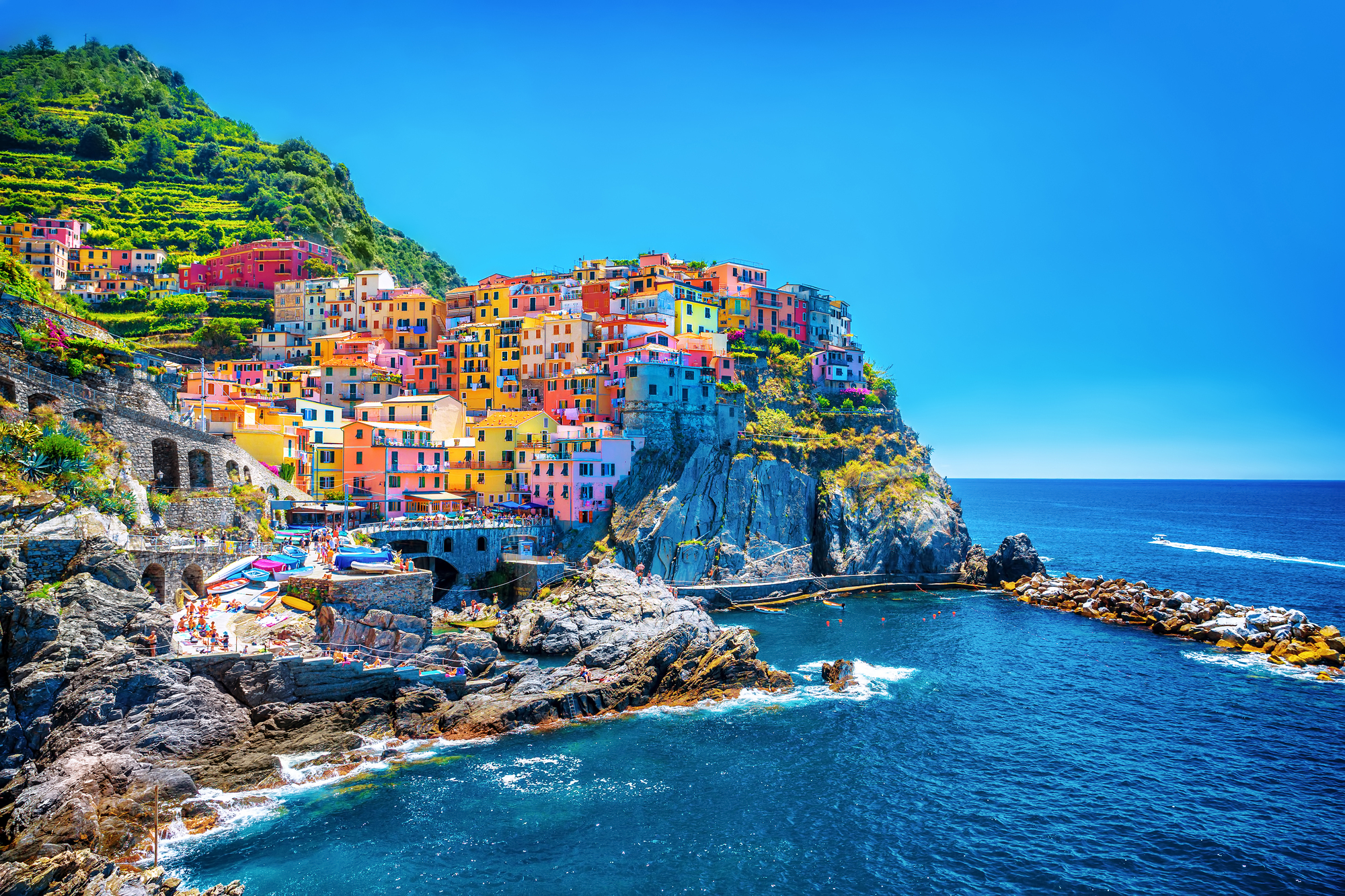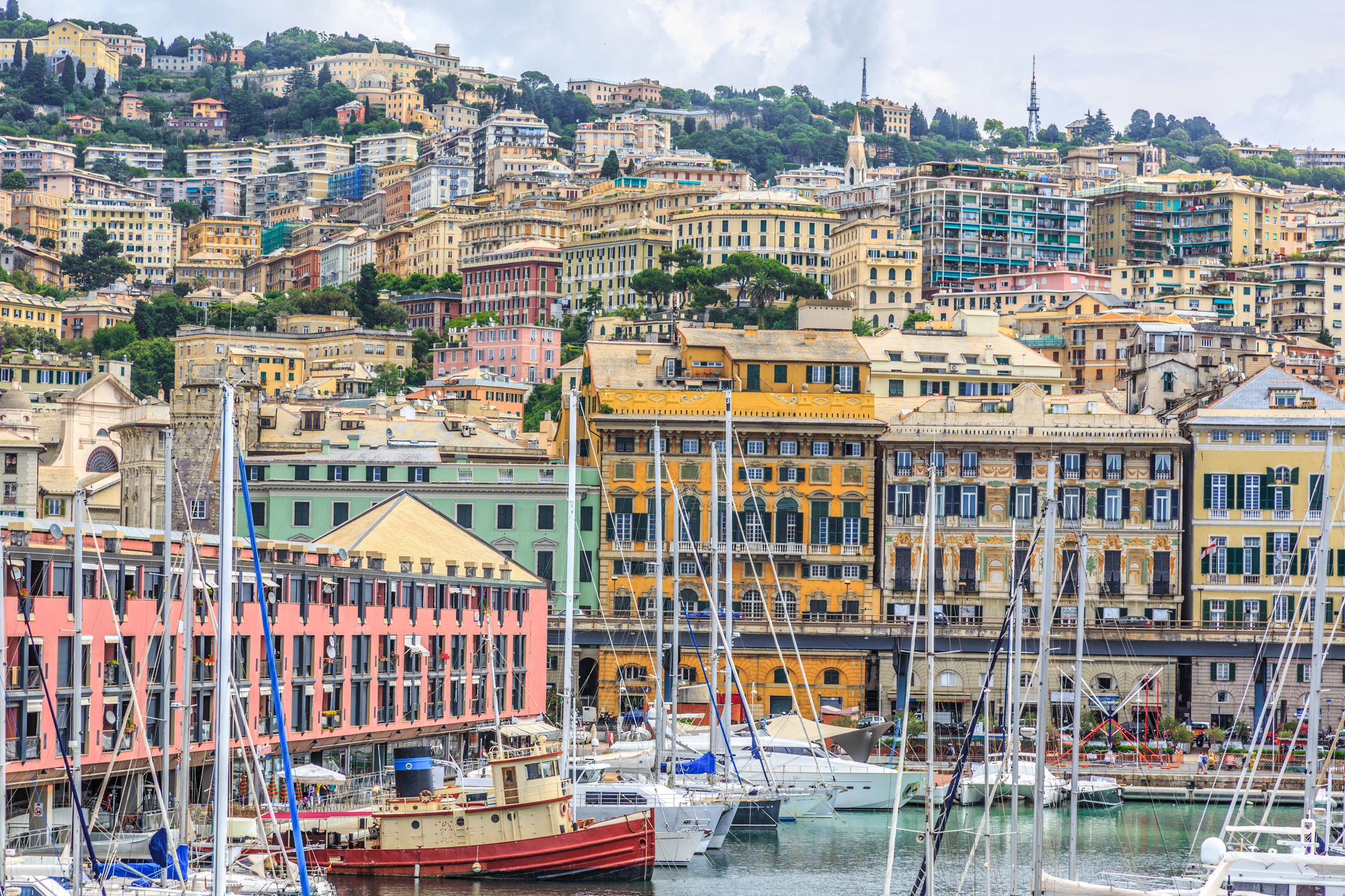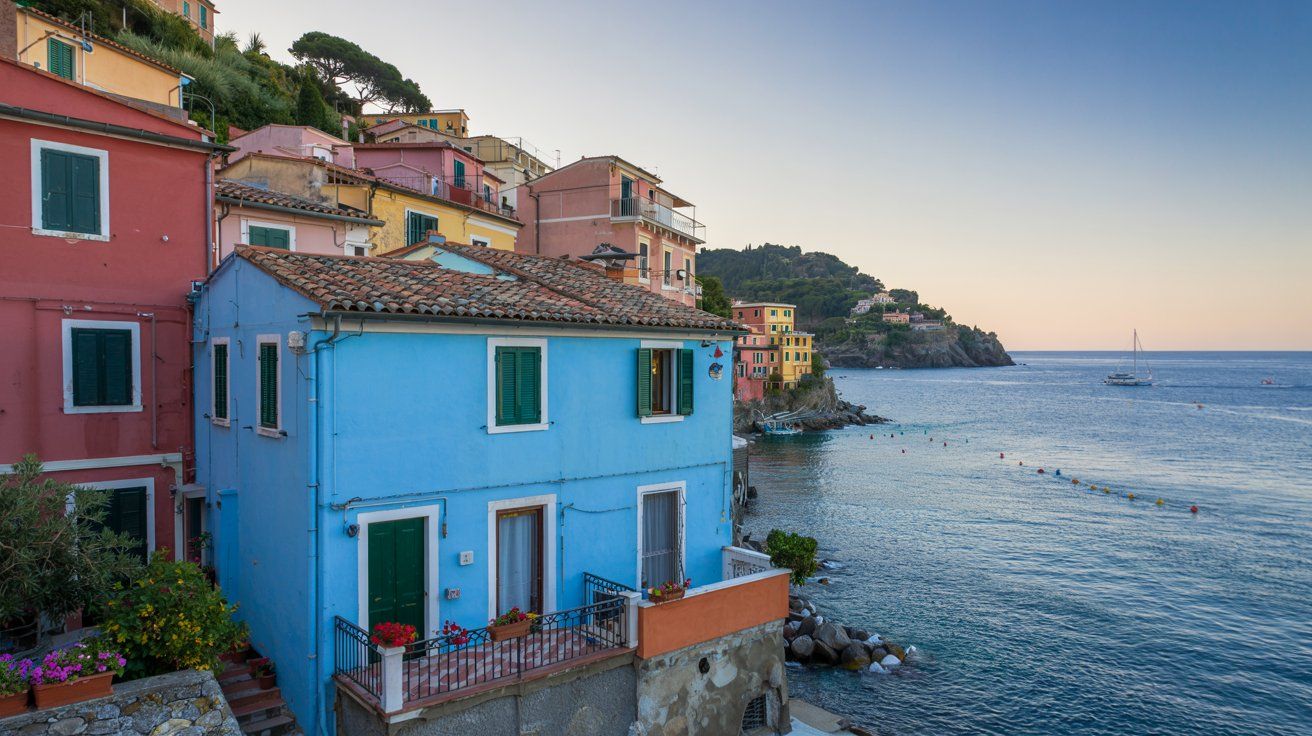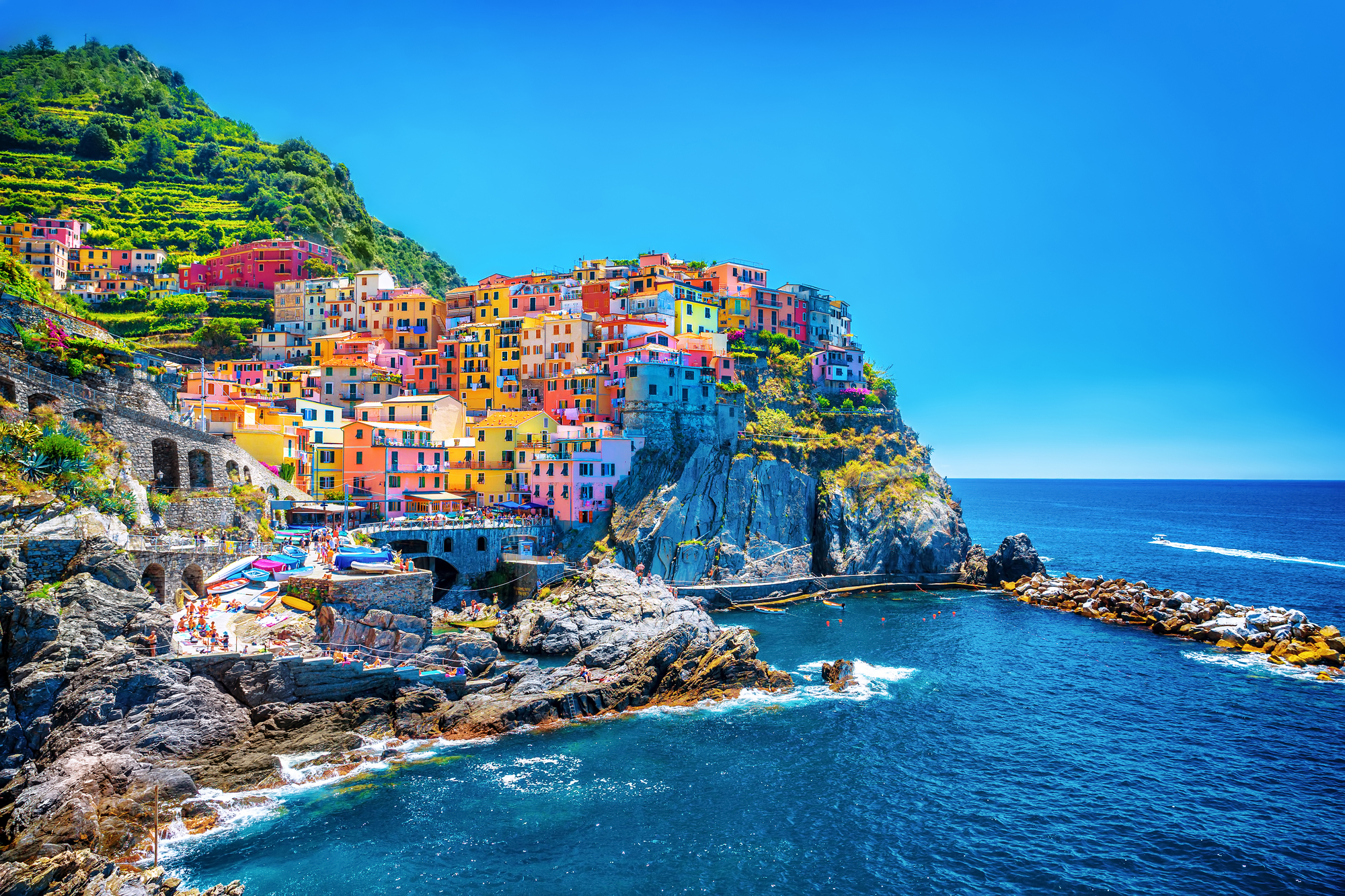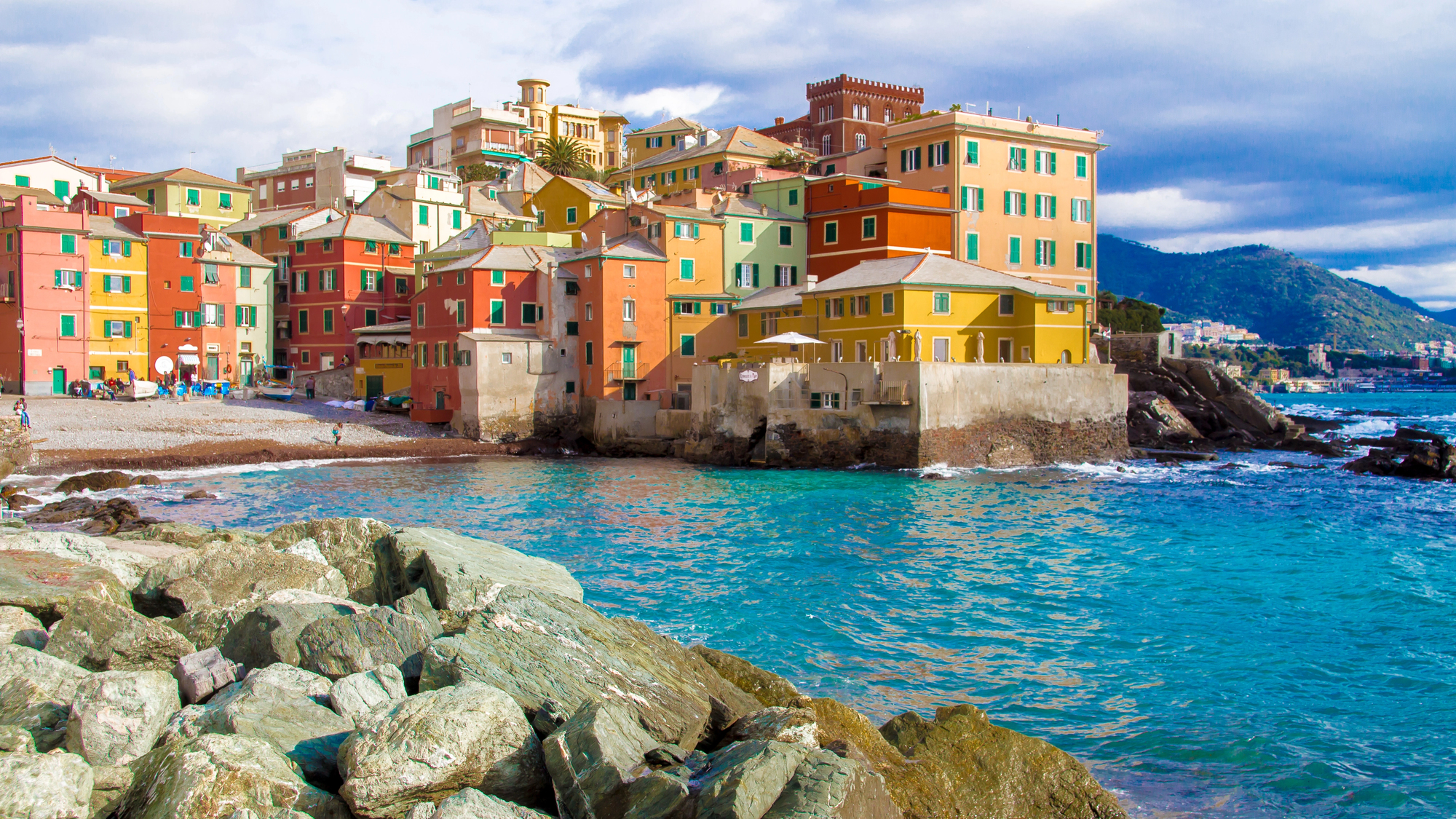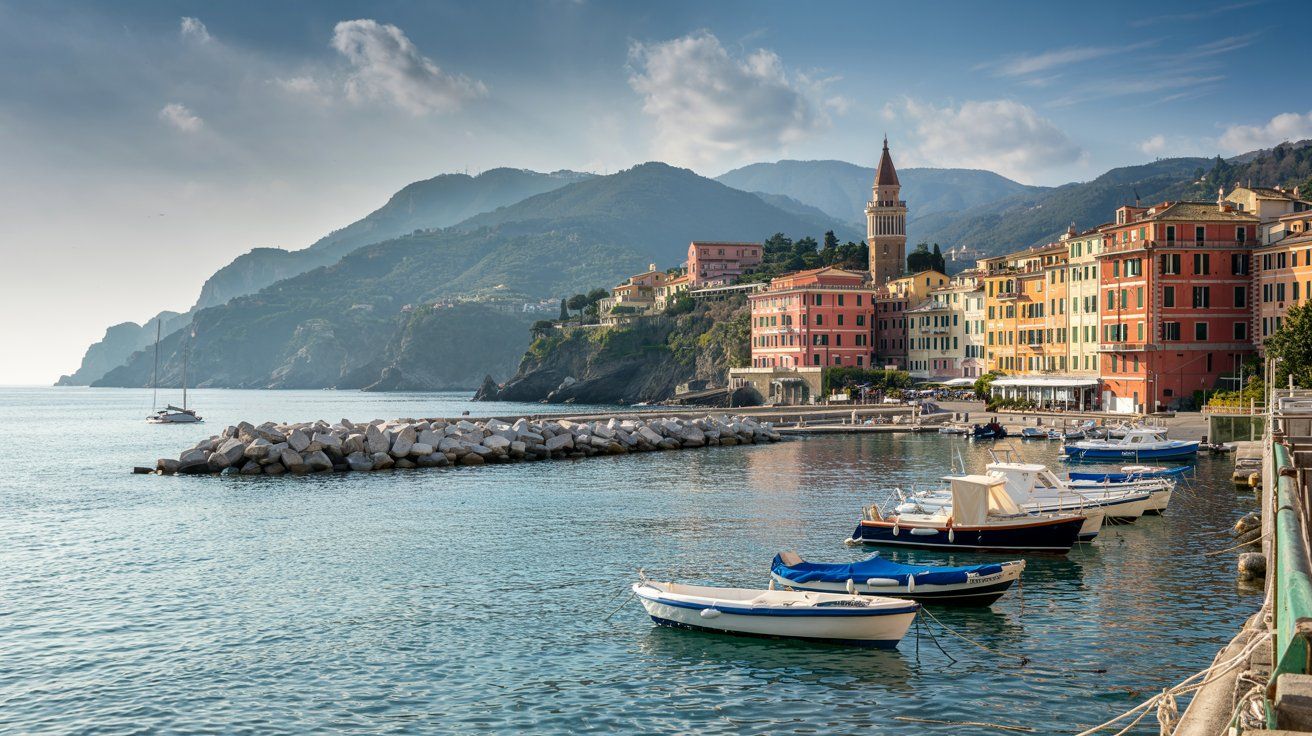Tucked away on a hillside in Genoa, Italy, the Staglieno Cemetery (Cimitero Monumentale di Staglieno) stands as Europe’s largest outdoor sculpture museum. This sprawling monumental cemetery opened in 1851 and has since become a treasure trove of artistic expression. The cemetery houses the finest collection of mid-19th to mid-20th century Italian monumental sculpture, featuring incredibly realistic depictions of weeping angels, grieving widows, and the deceased themselves.
Originally designed by architect Carlo Barabino in 1835 and later completed by Giovanni Battista Resasco, the Monumental Cemetery of Staglieno offers you a unique glimpse into Genoese art and society during the 19th century. As you wander through the grounds, you’ll find yourself surrounded by marble masterpieces that capture human emotion with startling realism.
Get a discount of 15% to 70% on accommodation in the Italian Riviera! Look for deals here:
Italian Riviera Hotels, Apartments, B&Bs
While not far from the center of Genoa, Staglieno Cemetery feels worlds away from the bustling city streets. The peaceful atmosphere and artistic significance make it a must-visit destination for art lovers, history enthusiasts, and those seeking a more unusual but deeply rewarding Italian experience.
History Of Staglieno Cemetery
Staglieno Cemetery in Genoa began as a response to public health concerns in the early 1800s. During this time, Napoleon’s regulations put an end to traditional church burials, creating the need for dedicated cemetery spaces.
In 1835, renowned architect Carlo Barabino was commissioned to design this monumental cemetery. When Barabino died unexpectedly during a cholera epidemic that same year, his talented pupil Giovanni Battista Resasco took over the project.
The cemetery officially opened its doors in 1851, showcasing a magnificent neoclassical design. As you walk through the grounds, you’ll notice how Resasco maintained Barabino’s vision while adding his own artistic touches.
Between its opening and World War I, Staglieno Cemetery developed extensively. This period saw the creation of many of the realistic sculptures that make the cemetery famous today – weeping angels, grieving widows, and lifelike portraits of the deceased.
After World War I, the cemetery continued to evolve. Many wealthy Genoese families commissioned elaborate sculptures and mausoleums, transforming Staglieno into an outdoor art gallery.
Throughout the 20th century, restoration efforts have preserved the cemetery’s artistic heritage. Today, you can admire the same stunning craftsmanship that has drawn visitors for over 170 years.
The cemetery represents not just a place of remembrance but a chronicle of Genoese artistic evolution through the 19th and 20th centuries.
What To See In Staglieno Cemetery
Staglieno Cemetery spans an impressive 250 acres of sculptural wonders and serene walkways. As you enter this open-air museum, you’ll be immediately struck by the life-like marble sculptures that make this cemetery world-famous.
The Pantheon area showcases some of the finest examples of neo-classical design. Here, prominent Genoese families rest in elaborate tombs featuring dramatic poses and incredible detail.
Don’t miss the famous statue of Caterina Campodonico, a humble chestnut seller who saved her entire life to afford her remarkably realistic memorial. Her sculpture exemplifies the incredible realism that defines Italian Riviera landmarks.
The Jewish Cemetery section offers a quieter space with distinctive symbolism and architectural styles that differ from the Catholic areas.
Art lovers will appreciate works by renowned sculptors who mastered various styles from Neo-classicism to Art Nouveau. The Appiani Family Tomb features exceptional Art Deco elements that show the cemetery’s artistic range.
Look for Lorenzo Orengo’s tomb with its hauntingly beautiful “Mystery of Death” sculpture – it’s considered one of the cemetery’s most moving pieces.
The gallery of tombs presents monumental sculptures with incredible attention to facial expressions and fabric details. Many sculptures appear so lifelike that the marble seems to flow like actual drapery.
Throughout the cemetery, you’ll find examples of symbolism in death – broken columns, extinguished torches, and sleeping figures that spoke to 19th-century visitors without words.
How To Get To Staglieno Cemetery
Reaching the magnificent Staglieno Cemetery from Genoa’s city center is straightforward and convenient. The easiest option is taking the line 13 bus, which takes only about 12-14 minutes and costs approximately €5.
The bus stop nearest to the cemetery is “Brian 1/Tomba Mazzini,” just a 3-minute walk from the entrance. Buses run regularly throughout the day, making this a flexible option for your visit.
If you’re staying in Genoa’s harbor area, you’ll find direct bus connections to Staglieno Cemetery. The cemetery is located not far from the city center, in what was once an outlying area but is now well-integrated into Genoa’s urban landscape.
There are no good train options to reach the cemetery, so buses are your best transportation choice. When planning your visit, consider allowing several hours to explore – many visitors report that you could spend days wandering through the incredible monuments and sculptures.
For those who prefer guided experiences, joining a walking tour of Genoa that includes Staglieno Cemetery gives you expert insights into this remarkable place. These tours often provide historical context about both the cemetery and the city itself.
Before setting out, check the current bus schedule at your hotel or at Genoa’s tourist information offices to ensure you have the most up-to-date information.
Staglieno Cemetery Visitor Information
Staglieno Cemetery is located in a hillside area not far from the center of Genoa. You can easily reach it from the harbor by bus.
Location: District of Staglieno, Genoa, Italy
Hours of Operation:
- Monday to Sunday: 7:30 AM – 5:00 PM
- Extended hours during summer months
Admission: Free entry to the cemetery grounds
Guided Tours are available for those wanting deeper insights into the cemetery’s artistic and historical significance. Many literary figures like Mark Twain, Friedrich Nietzsche, Guy de Maupassant, and Oscar Wilde found inspiration walking these grounds.
What to See:
- Monumental sculptures and elaborate tombs
- Beautiful marble artworks dating back to the 1850s
- Famous graves and family chapels
- The English section where Commonwealth war dead are commemorated
As one of the largest cemeteries in Europe, you’ll need several hours to fully appreciate Staglieno’s vast collection of funerary art. The cemetery’s haunting beauty has inspired many artists, including the band Joy Division, who used one of its sculptures for an album cover.
Photography is permitted, but be respectful as this is still an active cemetery.
Tips for Visitors:
- Wear comfortable walking shoes as the cemetery covers extensive grounds
- Visit in morning hours for the best lighting for photography
- Bring water, especially during summer months
- Consider hiring a local guide to learn more about the notable residents and artistic significance
Where To Stay Near Staglieno Cemetery
Finding accommodations near Staglieno Cemetery in Genoa is easy with several options available to suit different budgets and preferences. Hotels start from as low as $45 per night, offering good value for travelers exploring this fascinating monumental cemetery.
B&B Lercari comes highly recommended by previous guests who praise its cleanliness, comfortable beds, and quality linens. This cozy bed and breakfast provides a personal touch that many chain hotels lack.
La Casa Di Marta In Canevari is another option located just 1.4 km from Foce and a short 5-minute walk from Brignole tube station. This convenient location makes it easy for you to access public transportation for exploring more of Genoa.
When booking your stay, consider proximity to public transportation. Many hotels near Staglieno Cemetery offer good connections to Genoa’s city center, allowing you to explore both the cemetery and other Italian Riviera destinations.
For the best deals, compare prices across booking platforms. Many hotels offer flexible booking options, allowing you to reserve now and pay when you arrive.
The area surrounding the cemetery is relatively quiet compared to downtown Genoa, giving you a more peaceful stay while still being accessible to major attractions.
Things To Do Near Staglieno Cemetery
After exploring the artistic treasures of Staglieno Cemetery, Genoa offers many other attractions worth visiting. The historic city center is just a short bus ride away from the cemetery.
The Aquarium of Genoa is one of the largest in Europe and houses thousands of marine species. It’s perfect for families and anyone interested in sea life.
Genoa’s Royal Palace (Palazzo Reale) showcases luxurious furnishings, beautiful artwork, and elegant gardens. You can easily spend a couple of hours wandering through its ornate rooms.
The city’s historic churches are architectural marvels. Cathedral of San Lorenzo features a striking black and white striped exterior and houses religious treasures inside.
For families, The City of Children and Young is an interactive museum where kids can learn through play and hands-on activities.
Genoa’s historic center has narrow medieval alleys called “caruggi” where you can shop, dine, and feel the authentic Italian atmosphere. Via Garibaldi features several palatial mansions now serving as museums.
Piazza De Ferrari is the main square of Genoa with a beautiful fountain at its center. It’s surrounded by important buildings including the Ducal Palace and the Opera House.
For food lovers, try Genoa’s famous pesto in one of the traditional restaurants. Focaccia is another local specialty you shouldn’t miss.
The city’s port area has been beautifully renovated and makes for a pleasant waterfront stroll with views of boats and historic buildings.
Get a discount of 15% to 70% on accommodation in the Italian Riviera! Look for deals here:
Italian Riviera Hotels, Apartments, B&Bs


